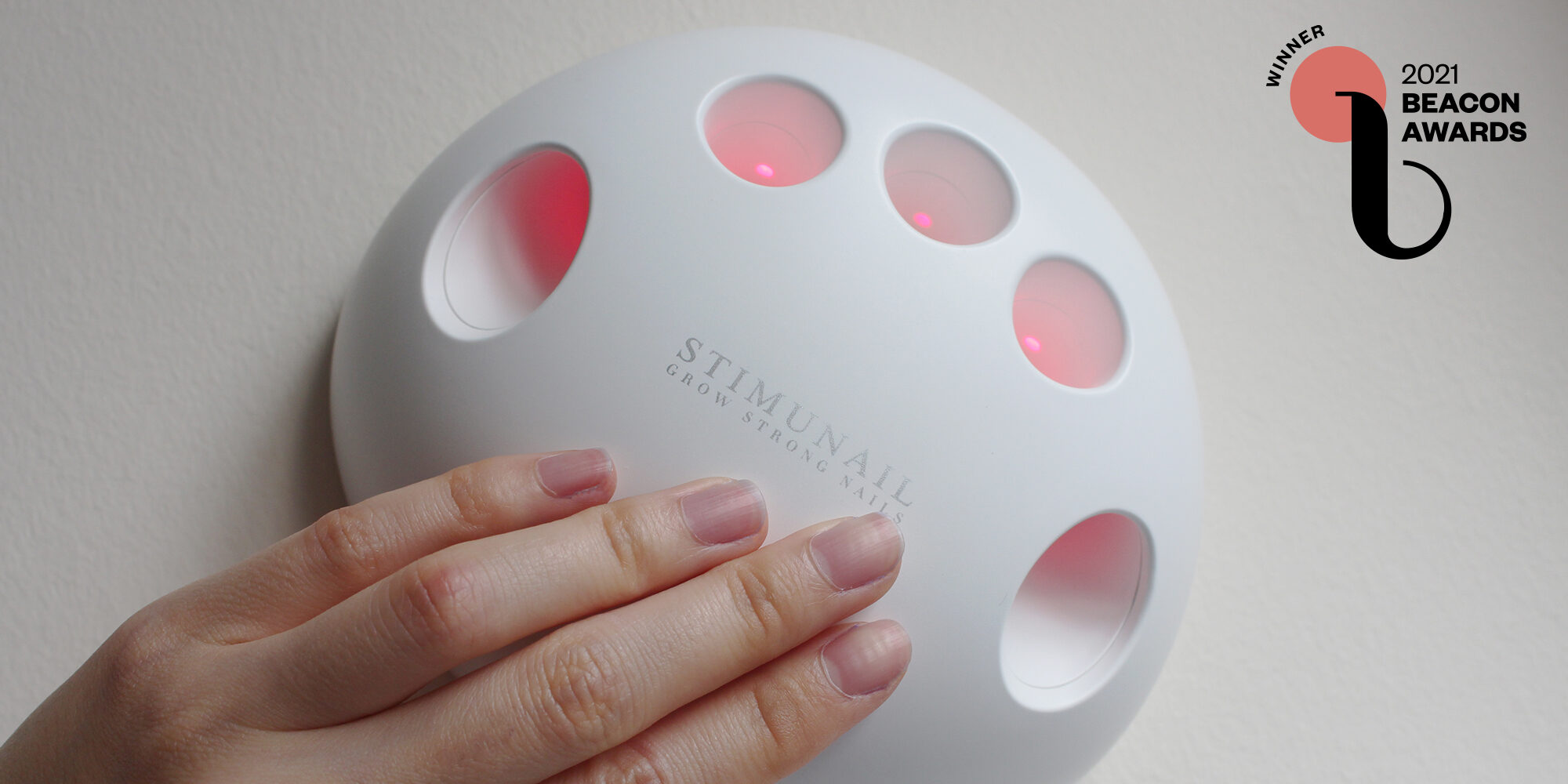
Beacon Award Winner Stimunail’s Device Uses Red Light, Heat And Vibration To Strengthen Nails
Stimunail founder Stacey Steinmetz was a senior marketing and retail manager at L’Oréal at a time in the mid-2010s that the company was riding the beauty device wave as the owner of now-defunct Clarisonic. “I saw that the interest from the consumer was moving away from products which were not that high performance to technology where they could get a professional service at home,” she says.
Simultaneously, Steinmetz, who worked on L’Oréal nail polish brand Essie, began to become concerned about ingredients in nail products. “When you think of hair sprays and perm products, the fumes can be toxic and noxious, but nail care is even more so when you think of the acrylics and the formaldehydes and the acetones that you inhale,” she says. Steinmetz decided a nail product with a high-tech element that avoided the ingredients that concerned her would be a market game-changer. “I wanted to marry the two things together,” she says.
Steinmetz’s aha moment occurred in early 2016 about seven years following the United States Food and Drug Administration giving the green light to red light therapy for regrowing hair. “I did research to determine whether it would work the same way on your nails, and it does. It’s the exact same modality,” says Steinmetz. “If the red light is absorbed by keratin cells, whether in your hair follicle or in your nail bed, it will stimulate growth.”
She left L’Oréal shortly after and focused on development over the next two years. On top of the red light, she incorporated heat and vibration components into the high-tech nail product she was creating. Steinmetz explains, “In the summer, your nails grow faster than in the winter because the heat increases blood flow and blood flow brings all those nutrients to the nail. I also know that massaging and vibration will also stimulate blood flow, so I added everything that I knew would naturally make your nails grow.”

Stimunail launched with its sole hero device in February 2021. The brand describes the $68 device as “the first nail wellness device that naturally supports overall nail health.” The device has holes for fingers that allows users to insert their nails to benefit from its red light, heat and vibration. Stimunail recommends they treat each hand for three minutes four days a week for 12 weeks to see initial results and twice a week for long-term maintenance.
A couple of months prior to Stimunail’s launch, The New York Times published a story about a new category writer Jessica DeFino dubbed nail wellness. The “skinification” of nails is the latest iteration of the nail wellness movement. The premise of nail wellness in 2021 was such: With salons closed, people were doing their own manicures and learning about the health—or lack thereof—of their nails in the process. Interest in polish waned as sales of products like cuticle oil spiked. “We came along at the right time,” says Steinmetz.
Amazon currently makes up about 25% of Stimunail’s business. The company sells more on Amazon than anywhere. “A lot of customers are finding out about our product or Googling our product and choosing to go to Amazon to purchase,” says Steinmetz. Other online wholesale partners include Urban Outfitters, Grove Collaborative, Verishop, ShopShops and 40Boxes.
Steinmetz hopes to land brick-and-mortar retailers in the near future. Her sights are set on Target or Ulta Beauty. “Being a beauty device, Stimunail is unable to provide sampling, so it’s best if the consumer can touch and experience the product in store,” she says. “I find that the sell-through is much better when people are able to physically touch it.” For physical retail, Steinmetz plans to have a broader assortment. “I don’t want to do a cuticle oil like everyone else does,” she says. “I would do some sort of nail mask or a liquid biotin.”
Upon Stimunail’s launch, Steinmetz assumed core customers would be women in their mid-20s who get acrylics or gels often. A couple of months in, she learned the average age of a Stimunail customer is around 50. “As you get older, your nails become more brittle, they grow slower, you get more issues, you get more yellowing and you get more bridges,” she says. “They’re using the device not for the beautification of their nails as I thought or to get long, strong nails, they’re actually using it to improve the health of their nails.”

An increased understanding of the customer has influenced brand’s marketing strategy. At the outset, it was focused on Instagram, but Stimunail’s customers weren’t necessarily active on the platform. The brand has received a much better response on Facebook and today focuses its advertising efforts there. Steinmetz says, “We’re not putting that much effort behind social media as a lot of other trendier brands would.”
In the past year, Steinmetz has been figuring out the best path forward for Stimunail. The brand had been supported by the industry and was featured in the magazine NailPro, a milestone that spiked interest among nail professionals. “Nail technicians and salons are very interested in carrying our device,” says Steinmetz. “They are using the device as an add-on treatment and then selling them in the retail area.”
The brand was also featured on Canadian daytime program “The Marilyn Denis Show,” which led to sales of hundreds of units. Steinmetz is looking for a Canadian distributor to leverage the exposure. “We’re going be on Good Morning America soon, we’re going to be on more websites, we’re going to be attending trade shows,” she says. “Our main goal is to build brand awareness.”

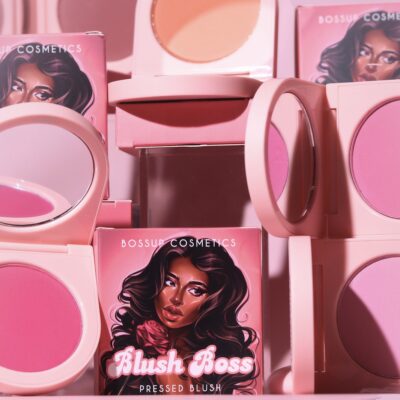
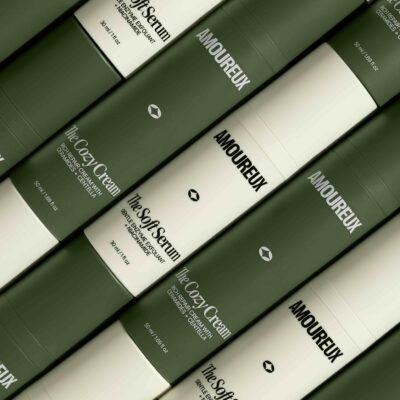
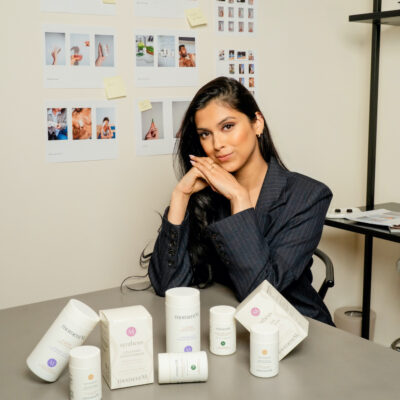
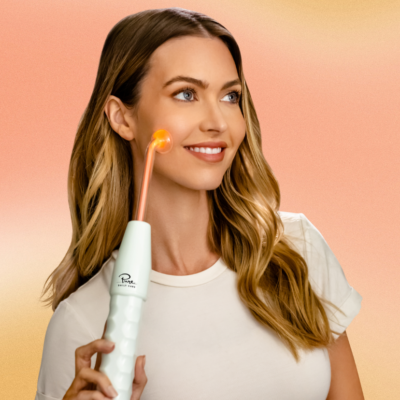
Leave a Reply
You must be logged in to post a comment.